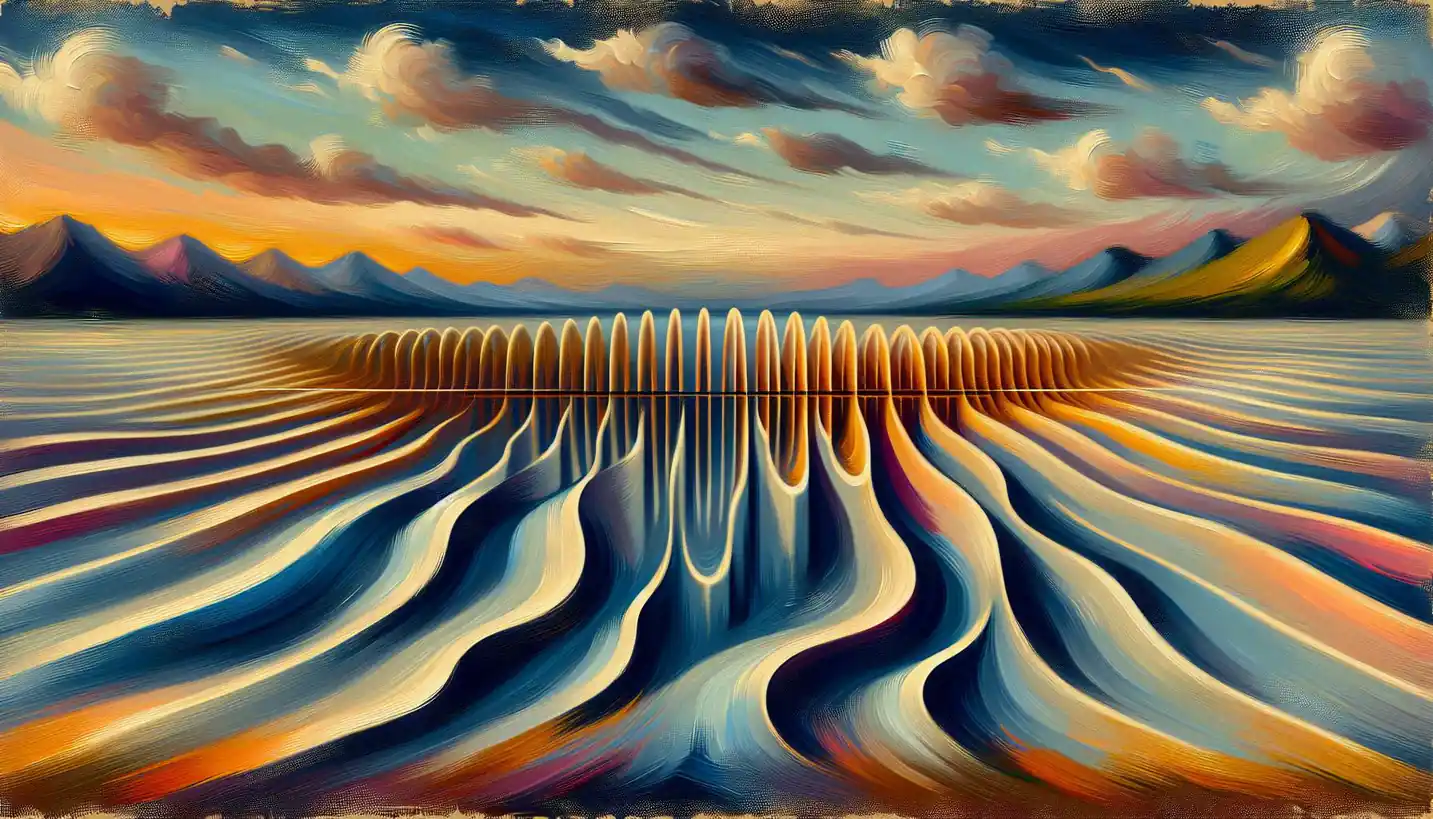· Physics · 5 min read
Gravitational Lensing: A Cosmic Magnifying Glass
Gravitational lensing acts like a cosmic magnifying glass, bending light around massive objects. Witness how this phenomenon reveals hidden details of the universe.

At some point, you’ve probably noticed how a glass lens can bend light, like in a magnifying glass or a camera. This bending isn’t just an earthly trick; in the universe, there’s a phenomenon called gravitational lensing. It happens when a massive object, like a galaxy or a black hole, warps space around it, bending the light from objects behind it. It’s a bit like seeing a movie through a funhouse mirror—shapes stretch and twist, but behind that distortion, there’s a lot to learn.
The Science Behind Gravitational Lensing
Einstein’s theory of general relativity flips the script on how we think about gravity. Instead of just pulling masses together, gravity curves space and time. Imagine space as a giant trampoline. Place a heavy bowling ball on it, and it creates a dip. Now, if you roll a marble nearby, it doesn’t move in a straight line—the path curves towards the bowling ball. This is similar to how light behaves around massive objects in space, like galaxies or black holes.
So, when light from a distant star or galaxy passes near a huge mass, the path bends, just like the marble on the trampoline. This bending can magnify, distort, or even duplicate the image of the background object—a cosmic mirage of sorts. This effect lets astronomers see things far beyond what’s normally possible, unveiling galaxies that might be otherwise hidden.
Types of Gravitational Lensing
Gravitational lensing isn’t a one-size-fits-all deal. It comes in a few flavors, depending on the mass of the lensing object and the alignment with the background source of light.
Strong Lensing
This is your dramatic, show-stopping version where the light bends so much that it creates multiple images of the same astronomical object. Sometimes it might form what looks like a circle or arc known as an “Einstein ring.” In really neat cases, something like a distant quasar can appear as multiple points of light around a galaxy.
Weak Lensing
This type is a bit subtler, gently distorting the shapes of background galaxies. The warping isn’t enough to create multiple images but changes the shape just so. By studying these minor distortions, scientists can map out the distribution of dark matter, which doesn’t emit light but has a gravitational pull.
Microlensing
Microlensing is like the cosmic background artist, offering brief performances when a star or planet moves in front of a more distant light source. Though small, it can tell us about planets around other stars, even those we can’t see directly.
Discovering the Invisible: Dark Matter and Dark Energy
One of the most exciting things about gravitational lensing is its power to reveal the unseen parts of the universe. Dark matter, for example, doesn’t emit, absorb, or reflect light, making it invisible and mysterious. However, it has mass, and where there’s mass, there’s a gravitational effect.
Weak lensing allows scientists to measure the distribution of dark matter by observing the warping of light from distant galaxies. These maps of invisible structures give us clues about what’s holding galaxies together and how they clump in cosmic filaments.
But there’s more. Gravitational lensing also offers clues about dark energy, the enigmatic force speeding up the universe’s expansion. By analyzing how lensing changes over cosmic time, we can get a sense of how dark energy might be at play.
Seeing Back in Time
It’s not just about finding hidden galaxies or tracking down dark matter. Gravitational lensing acts like a time machine. Light from distant galaxies travels millions or even billions of years to reach us, and lensing can stretch and magnify this light, allowing us to see these ancient cosmic wonders. Each photon is a time traveler, bringing stories from the early universe when galaxies were still forming, stars were being born, and the cosmos was a vastly different place.
Challenges and Future Exploration
While gravitational lensing is a marvel of cosmic physics, tapping into its full potential comes with challenges. The universe is a noisy place, and differentiating between lensing effects and ordinary distortions requires precision and advanced telescopes.
Upcoming missions like the James Webb Space Telescope and the Vera C. Rubin Observatory promise to sharpen our lensing vision, enabling more detailed maps of dark matter and peering further back in time.
Moreover, as technology progresses, we might someday harness lensing more directly. Imagine using gravitational lensing to focus on a specific star system light-years away, amplifying its light to detect signs of life or other fascinating features hidden in distant corners of space.
Conclusion
Gravitational lensing isn’t just an astrophysical curiosity—it’s a fundamental way we explore the universe. Like a cosmic magnifying glass, it expands our view, revealing not just what’s visible, but also what lurks in the cosmic shadows. By bending light from galaxies far away, we’re not just seeing them; we’re unlocking secrets about the makeup of our universe, its past, and possibly its future.
In a universe filled with mysteries, gravitational lensing serves as an essential guide, offering clarity amid chaos and light amid darkness. The next time you look through a magnifying glass, remember its cosmic counterpart and the vast, unseen universe it helps us understand.


